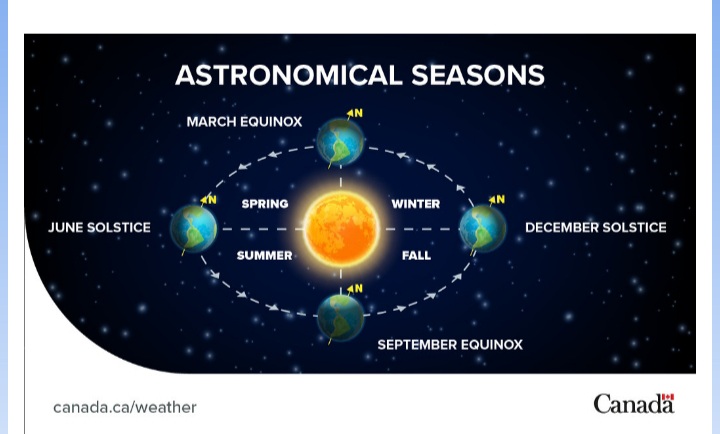**** Info via Environment Canada
Winter Solstice and the Christmas Star
December 21 at 5:02 A.M. EST marks the winter solstice – or the start of astronomical winter.
Taking place on the exact date of the December solstice, we will get to see this year the closest conjunction of Jupiter and Saturn in 397 years! This rare line-up creates what is known as the “Christmas Star” or “Star of Bethlehem”. In Canada, watchers should turn their heads and telescopes towards the southwest portion of the sky about 45 minutes after sunset to see the planets align on the week of December 21.
The great conjunction of Jupiter and Saturn

In astronomy, a planet conjunction occurs when two planets appear to be close together in the sky, as observed from Earth. A great conjunction is a conjunction of the larger planets Jupiter and Saturn. Great conjunctions occur regularly (every 19.6 years, on average) due to the combined effect of Jupiter’s approximately 11.86-year orbital period and Saturn’s 29.5-year orbital period. However, these conjunctions aren’t all created equal! The 2020 great conjunction of Jupiter and Saturn will be the closest since 1623 and the closest observable since 1226.
Winter solstice
The time and date of the start of astronomical winter is based on the exact position of the Sun in relation to the Earth. Note that the start date however, of “meteorological winter” is simply based on the 12-month calendar, and therefore the annual average temperature cycle. In Canada, meteorological winter starts on December 1st.
As Earth’s north pole tilts away from the Sun on the solstice, it marks the start of the cold season here in the northern hemisphere and, with the south pole tilting towards the sun, it signals the first day of summer in the southern hemisphere.




